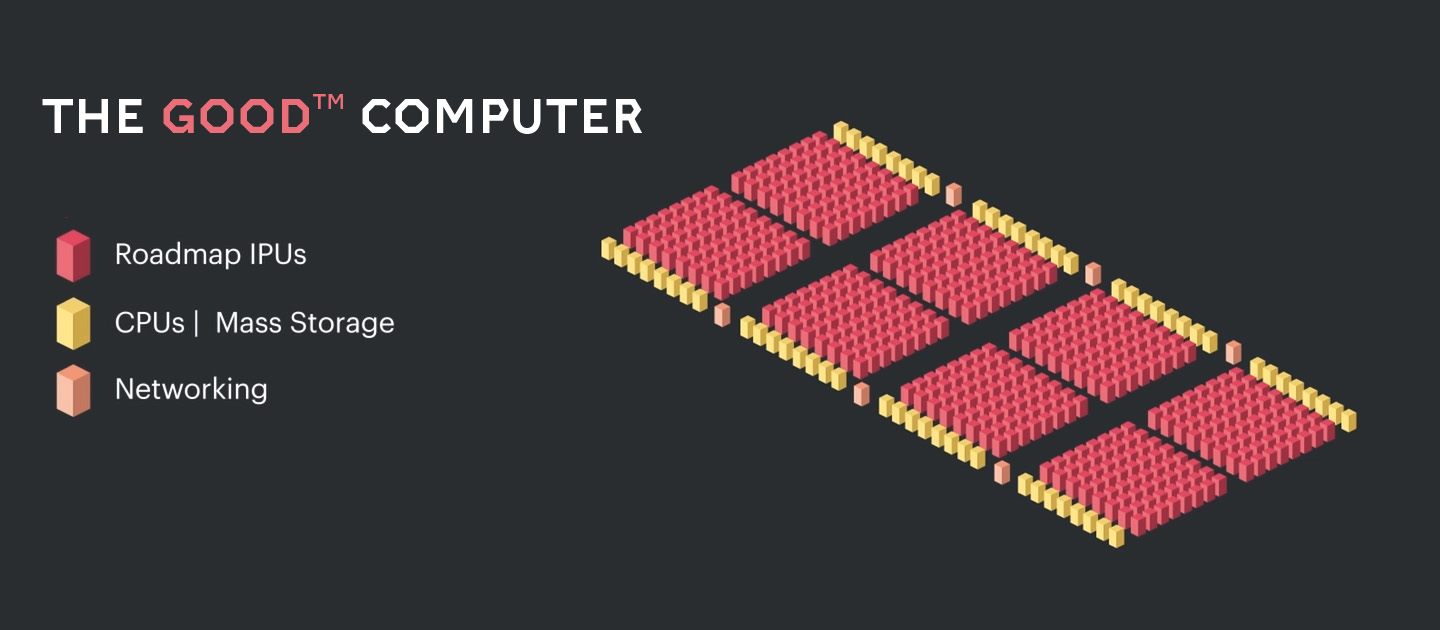Starting from a single cell and shaped by nearly 4 billion years of evolution, the human brain is perhaps nature’s greatest achievement. Our brain is an incredibly complex computing device with approximately 100 billion neurons and more than 100 trillion parameters in a biological-neural-network system that delivers a level of compute yet to be matched by any silicon computers. Today, we are revealing that Graphcore is developing an ultra-intelligence AI computer that will surpass the parametric capacity of the brain.
The computer science pioneer Jack Good* was the first person to describe a machine that would exceed the capability of our brain in his 1965 paper, Speculations Concerning the First Ultra-Intelligent Machine.
Named in honour of Jack Good, Graphcore will deliver by 2024 the world’s first ultra-intelligence AI computer that we are calling the Good™ computer.
Following on from our announcement of the Bow IPU products, we are already developing the next generation of IPU technology that will power this Good™ machine to deliver the following capabilities:
- Over 10 Exa-Flops of AI floating point compute
- Up to 4 Petabytes of memory with a bandwidth of over 10 Petabytes/second
- Support for AI model sizes of 500 trillion parameters
- 3D wafer on wafer logic stack
- Fully supported by our Poplar® SDK
- Expected cost: ~$120 million (configuration dependent)
We will provide further updates on the Good™ computer over the coming quarters and we are keen to engage with companies and AI innovators who can help us develop the next breakthroughs in AI that this ultra-intelligence machine will make possible.
*Jack Good (born Isadore Jacob Gudak on 9 December 1916) was a true pioneer who undertook important code breaking work at Bletchley Park in the UK during the 1940s, including work on the world’s first electronic computer, Colossus.
Together with Max Newman at Manchester University he helped to build the world’s first stored-program computer, the Manchester-1. Then in 1958 he developed the concept of Fast Fourier Transforms (FFTs) which are now at the centre of all wireline and wireless communication systems.
While a Fellow at Trinity College, Oxford, in the 1960s he set out the case for complex neural networks as the way to build intelligent machines, a technology that we are starting to exploit today. He also predicted the need for ultra-parallel machines with highly parallel sparse connections.
Jack Good’s comments on reinforcement learning as the best way to train an intelligent machine are highly prescient but he also described the concept of small changes in the intelligence structure, driven by feedback from the outputs, which is effectively what we do today with back propagation in deep neural networks.
Stanley Kubrick turned to Jack Good as the advisor on the 1968 film 2001: A Space Odyssey. It was Jack Good, with his insights on intelligent machines, that helped to describe the HAL 9000 computer which was a central character in the movie.
